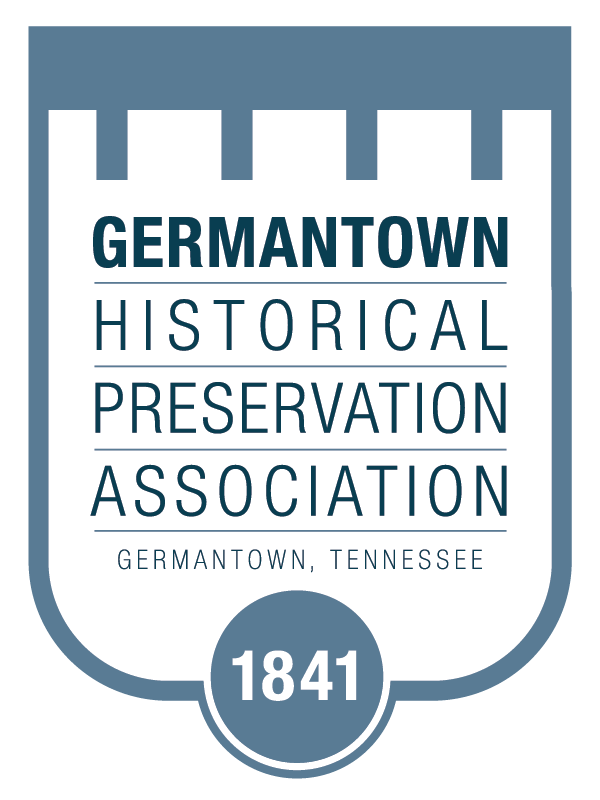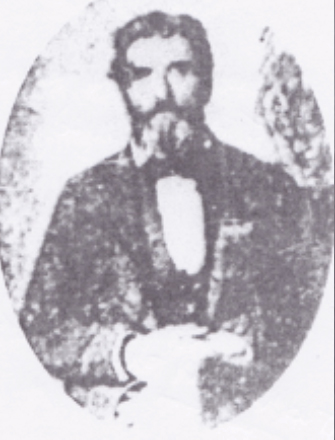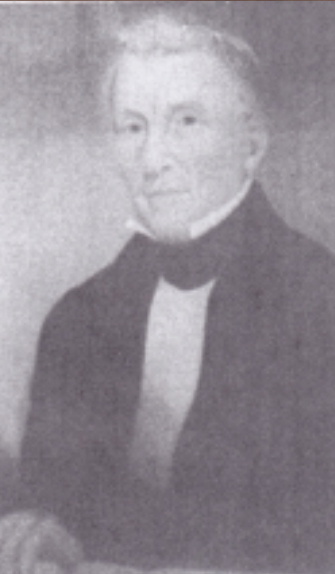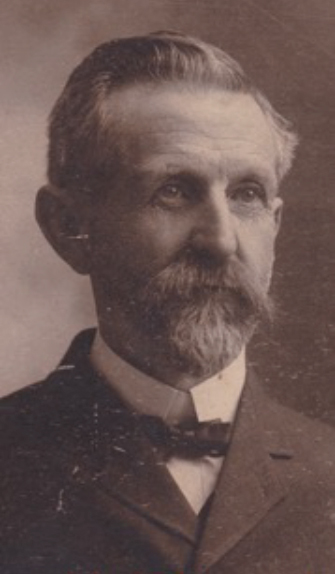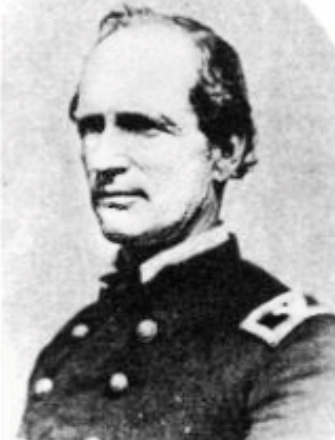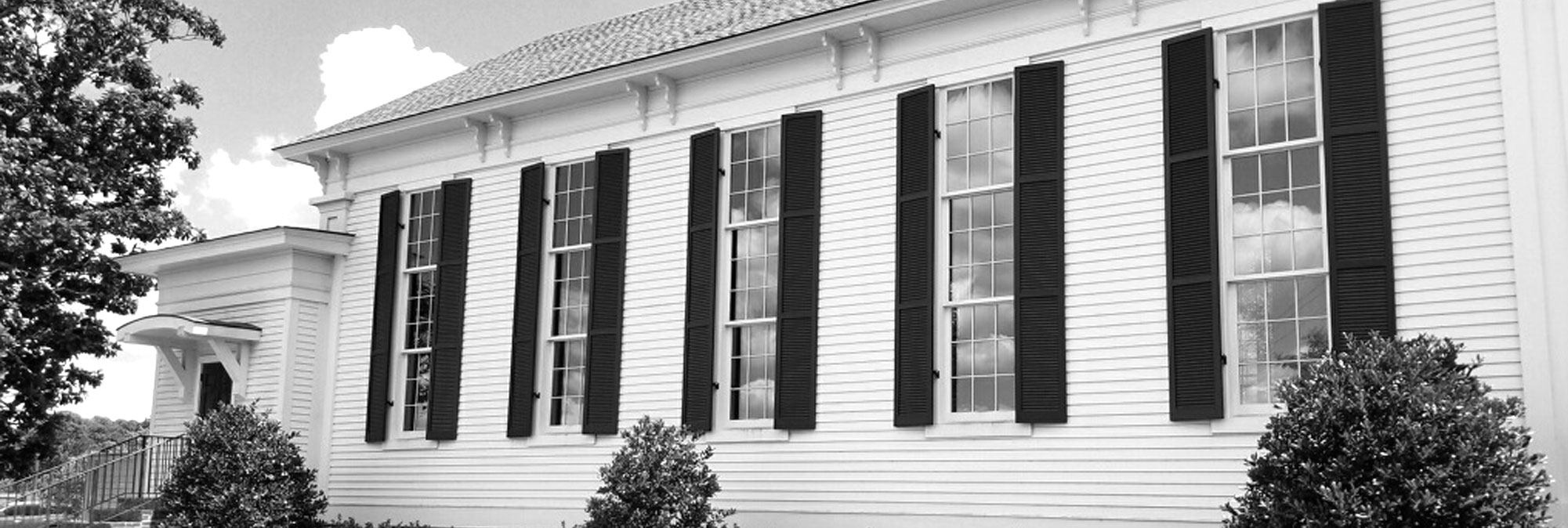
Baptist Church
Civil War and the Baptist Church
History holds much hearsay, stories amended to suit the times and certainly politics. Time, repetition, and the writer can extend the distance between truth and fiction. There are a number of Germantown stories that I long for firsthand knowledge. How many times do we want to turn and ask that person who is now deceased what happened?
Such is the story of the destruction of one of our city’s landmarks in the Civil War, the Germantown Baptist Church. In 1904, farmer J.C. Rogers of Cordova said, “it was generally understood that the Union Army had burned it (the church).1 A close reading of the 1904 case of U.S. vs. Germantown Baptist Church (U.S. Claims Court, No. 11688), gave me my answers. The Court’s primary questions centered on loyalty to the Union, responsibility for the destruction, and the value placed on the structure.
History of the Church
1830s. The Germantown Baptist Church is located at the intersection of Germantown Road and North Street. Early records of the Baptist Church were destroyed in fires, so it is not known when it was organized. Before any church built their own building, the Baptists, Methodists, and Presbyterians used a log schoolhouse built-in 1833.
Fortunately, the minute books of the Big Hatchie Association (organized 1828) were preserved be-ginning 1830, as well as those of the Tennessee publication, The Baptist (now the Baptist and Reflector), since 1835. It was in these publications (found in Nashville) that reference to the Baptist Church of Germantown was found.
In a letter written August 9, 1838, by Levi Roberts and printed on page 269 of the September 1838 issue of The Baptist, he wrote “two weeks ago I received into the church at German Town (New Hope), Shelby County, 49 members of whom I baptized 45.” Such an organization is indicative of a church whose beginning was much earlier. At the meeting of the Big Hatchie Association, October 1838, New Hope Church with 69 members was accepted into membership. The delegates were Martin Hodges, H. Irvin, and J. A. Harris. Martin Hodges, a licensed preacher, was most likely the minister who organized the church through the 1830s.
1840s. On December 11, 1841, Wilks Brooks, an abutting neighbor and active member in the church, donated land on which the original sanctuary would be erected. The property was once part of early settler Nicey B. Shepherd’s 65-acre land grant of 1837.
On the 30th of that month, when the town of Germantown obtained its charter of incorporation, New Hope Church became known as the Baptist Church of Germantown. Years later it would become the Germantown Baptist Church. Lemuel Hall Bethel would serve as Pastor between 1841 and 1849.
1850s. A Bible published in 1856 was presented to the church by Elder and later Pastor (1854-1856) Jeremiah Burns on September 11, 1858. By 1860 the church had grown to a total 67 white and 38 black members.4
1860s. The original sanctuary was erected by Tom Simmons in December 1862.5 That same year Union forces camped here after victories at Shiloh, Corinth, and Memphis. Germantown was not strategic to the war effort except for its location on the Memphis and Charleston Railroad.
The church served as a hospital for Federal forces during the Civil War. The church would be destroyed by soldiers of the 3rd Illinois Cavalry Regiment and the 47th Illinois Volunteer Infantry Regiment, under the commands of Col. McCrellis and Col. Sanford, respectively.6 They dismantled it in order to support the material needs of the Federal forces in camp, destroying it to the point that it could no longer be used as a place of worship.7 Neighbor Sally Walker, a charter member of the Presbyterian Church, lived opposite the Baptist Church and sent word by a servant that the pulpit Bible be saved and sent to her. Her request was granted.
How the Church was destroyed and on what basis they were reimbursed has never really been explored. Saying that Union troops burned the church follows a familiar storyline found in many southern communities. A look at the 1904 Claims Court case between the Germantown Baptist Church of Shelby County, Tennessee vs. The United States shows that this was not the case.
After the war, and during the ministry of Pastor J.B. Canada (1870-1872) the church was rebuilt. Fundraising began (1869), and Edward M. Cole, Millwright, and Builder, was contracted for a price of $800 plus materials to build back the church (1870) in the same location. The seating was changed as the ladies now entered one door and sat on one side, while the men entered another door and sat on the opposite side. The deacons sat near the front and gave the “amen”, possibly the reason for the expression “The Amen Corner”. After the war, membership dropped to 40.8
United States vs. Germantown Baptist Church
U.S. Claims Court No. 11688
E.W. Gorman, Thomas Payne, J.L. Coopwood, deacons of the Germantown Baptist Church of Shelby County, Tennessee, appointed Attorneys Moyers and Consaul, of Washington, D.C., to prosecute the claim of $2500 for the Germantown Baptist Church (Claimant) against the United States Government (Defendant) on October 9, 1903.
January 8, 1904. Senate Bill 3214 was introduced to the 58th Congress, 2nd Session for relief of the Germantown Baptist Church. The bill was read twice and referred by Senate Resolution of April 27, 1904, to the Committee on Claims. It authorized and directed “the Secretary of the Treasury to pay out of any money in the Treasury the sum of $2500 for full compensation for use, occupation, and destruction of the property taken for the use of and used by the Federal forces during the late civil war.”
November 8, 1904. The Miscellaneous Division of the Secretary’s Office of the Treasury Department requested papers regarding the loyalty or disloyalty of the church to the United States Government.
December 27, 1904. United States Assistant Attorney-General J.A. Van Orsdel submitted to the Department of Justice a copy of the petition filed by the church in the Court of Claims, requesting that all facts, circumstances, and evidence touching the claim be set forth. Two days later, the War Department reported that their records did not show any claim for property destroyed during the Civil War.
Van Orsdel, representing the Defendant, wrote that “the Claimant’s attorneys have not produced any additional evidence or precedents or advanced any good reasons why the court should amend its findings in this case.” He believed that “the court will find that $800 is the full value of the building.”
[Note: The Senate Bill was introduced, the U.S. Government asked that the church’s loyalty be addressed, and the value of the church was now debatable. The church’s deacons believed the church to be worth at least $2500 and Edward Cole’s labor cost to rebuild was $800. Later the church would state that at the time and place of destruction, the structure was ‘reasonably’ worth $2000.]
Testimony
October 17, 1906. The case was heard on its merits before the U.S. Claims Court on the 17th of October 1906.
The Defendant’s (U.S. Government) Brief on the ‘Claimant’s (Church) Motion for Amendment of Findings of Fact’, stated in part, that “the affidavits filed in support of the claim of the Germantown Baptist Church, are made by old citizens of Germantown who were familiar with the existence of this church during the Civil War, and were personally familiar with all of the circumstances connected with its use, occupation and destruction of the Federal forces. Prior to the coming of said forces in 1863, the church was in good condition and worth at least the sum of $2500.00. It was used altogether for purposes of worship, and as an organization never gave aid or comfort whatever to the Confederacy and was not used as a meeting place for any society working to aid the Confederate cause. It was destroyed by the 47th Illinois Volunteer Infantry Regiment, under Colonel Sanford and the 3rd Illinois Cavalry, under Colonel McCrellis. It appears that the troops pulled down portions of the church at various times, using the material for the use of the army and that this work was continued until the church was completely destroyed, and could no longer be used as a place of worship.”
The church was relying on the provisions of the 14th Section of the Tucker Act (Act of March 3, 1887), in order that the Court might pass upon the evidence and receive the requested sum of money.
The Defendant’s Brief on ‘Loyalty and Merits of the Case’ stated that “an analysis of the evidence reveals very clearly that the church in question was destroyed by fire, but there is no competent testimony upon which to lay the cause of the destruction at the door of the Union soldiers, or even show that it was intentionally fired by anyone.”
The Defendant went on to state that of the witnesses testifying that the Federal troops burned the church, witness Wright added “that is my recollection; I did not see it burned; I wasn’t there, but I saw it after it had burned.” Witness Rogers testified that “the church was burned but he did not know who burned it.” He was persuaded to admit that “it was generally understood in the community that the Union army had burned it.” And finally, opposed to this testimony was that of two “ignorant witnesses” (language used by the government to objectify the two African-Americans) Roberts and Cornelius to which they called attention to their “suppositions” and “guesses”, to indicate the character of their testimony and what weight they should attach to it.”
The Defendant believed that there could be no doubt that the church did burn but “we do not by that admit that it was fired by the Federal soldiers. It would only be conjecture to the state by what agency it was caused to burn. The court found “that during the said war the said Germantown Baptist Church, of Shelby County, Tenn., was consumed by fire, but it cannot be found that it was so consumed as a result of any act or acts on the part of the Federal forces.”
New findings were then filed by the church on November 3, 1906, allowing for a new trial for the claimant’s motion in the sum of $1250. On December 24, 1906, the Defendant presented a Statement of Case No. 11688 and a new ‘Findings of Fact’ in the Court of Claims.
[Note: Facts were presented, witnesses testified, competent testimony was not found to affix the blame on destruction by fire, and the church adjusted its claim downward.]
What Did You Really See?
January 1907. In late January of 1907, the Claimants presented their ‘Findings of Fact’, stating that at the time and place of destruction, the building was reasonably worth the sum of $2000.
The Claimants also submitted an ‘Abstract of Testimony’ taken from several individuals in Memphis, Tennessee, on October 28, 1904. Most of the individuals testified to the use of the building, its size, location, and appearance. What is telling is what they saw or didn’t see relative to the destruction of the structure.
J.M. Wright, a 56-year old farmer, from Cordova, Tennessee, testified “I know that the building was used by the Federals for a hospital but could not tell how long, but as long as Col. McCrellis stayed at Germantown. When they left, they burned the church; that is my recollection, but I did not see it burned.”
J.C. Rogers, a 69-year old farmer, from Cordova, Tennessee, lived about 3 1/2 miles from Germantown. He testified “I never was at Germantown while they (Union soldiers) were there but once or twice. I think McCrellis was in command there then. After they had used it as a hospital, it was burned down, but I do not know who burned it. It was generally understood that the Union army had burned it.’’ In cross-examination, he stated that “his knowledge of the use of the building and what happened to it is hearsay.”
Mrs. Sally A. Thompson, a 61-year old resident of Memphis Tennessee, whose parents belonged to the Church, lived 1 1/2 miles from Germantown. “I cannot tell if the building was used by the Federal army. It was wintertime and we were cut off from town more or less. I heard the Baptist Church was burned during the war.”
The following testimony was taken at Germantown on November 3, 1904. Mr. E.W. Gorman, a 66-year old bookkeeper who left Germantown in 1859 and returned in 1865. In cross-examination, he stated, “I am the custodian of the church records, but have no records showing the cost of the old building.”
M.J. Turner, a 74-year old farmer who lives in Germantown stated, “I do not know anything about how or when the building disappeared.”
Edward M. Cole, a 70-year old millwright and builder who resided in Germantown stated, “I have no personal knowledge of the destruction of the church.” He did offer that the old building was worth $2000 when the Federal troops first came to Germantown, and the cost of erecting the new building was about $2,500.”
Quinton Roberts, a 66-year old farmer, lived within 3/4 of a mile from Germantown. His wife belonged to Mrs. Sallie Walker who lived across the street from the Church. Quinton stated that “I saw no one taking it down but soldiers of the United States Army. I saw the United States soldiers with wagons and teams tearing off the plank and weatherboarding, loading the wagons, and then driving off with it to their camps. They took it and hauled it off until there was no church there. They were camped around this place then. It was my supposition that they used the lumber to build stables and houses in their camps around. There might have been some wreck on the ground but nothing like a house.”
In cross-examination, Quinton stated “he was in town about every night as he and his wife lived just across from the church. “I was in Germantown in the daytime while the church was being torn down. Could not say how often. Was here some days and some days not. I would say they were 3 or 4 weeks tearing it down. They were not tearing it down all the time. They did not have far to carry it. I might make a guess on how often I saw them taking parts of the church and might be safe to say a dozen times. Sometimes there would be 2, 3, or 4 wagons and sometimes 1. They would get it as they needed it. They took everything that was serviceable. I did not see them put the sills on the wagons.”
Phillip Cornelius, a 77-year old farmer lived in Germantown during the war. Phillip stated “Tom Simons built the church. That building stood throughout the war until they tore it down; McCrellis and Sanford’s regiments tore it down. I saw the soldiers tear it down and hauling it away. I saw them take it until they hauled it all away but the fragments. They built tents with the materials to live in and made beds with the planks inside their tents. They were camped over here, about 1/2 mile in the woods and on the Wolf River Road, both sides of town. I could see them every day. I was a hotel boy and would be passing every day getting provisions from the sutler’s shop.”
In cross-examination, Phillip also stated that, “I know what the soldiers did with their materials because I went into the camps a good deal and saw what they were doing with it. I know the material they were using came from the church because I would sometimes follow them when they would take materials from the Church. I sold milk and butter in the camps. It was 2 or 3 weeks before they got all the building away; at least two weeks to my recollection. They would not haul every day. They left the sills, the brick pillars under the sills, and the shingles.”
During the December Term of 1905-1906, the Claimants in their ‘Motion for Amendment of Findings of Fact’ stated that “there is no question at all as to the demolition of the house of worship belonging to claimant organization. The materials were taken off and used by the Federal forces. The error of which we complain is in reporting to Congress the value of materials taken from the building, instead of reporting the value of the building, as a building, at the time of its demolition.”
In the Claimant’s Second Motion for Amendment of Findings of Fact’ filed December 31, 1906, the Claimant respectfully moved that the findings of fact filed herein December 24th, 1906, be modified to-wit by striking, “during the said war the said building was consumed by fire but it does not appear to the satisfaction of the Court whether said the fire was caused by any act or acts of the military forces of the United States, or by other person.” They chose to substitute “during the war, that about July 1863, the United States military forces, under proper authority, tore down said church building and appropriated the materials taken therefrom to the use of the United States Army.”
The ‘Brief in Support of the Motion’ stated that “the error that crept into the second filing required the filing of the present second motion for amendment. There was not one word of competent evidence, in this case, indicating that the building in question was burned. At the time it was so destroyed the said building was reasonably worth the sum of $1250.”9
[Note: Testimony revealed that much could be considered hearsay and that the church moved to delete fire by the Union troops as a cause for destruction.]
Conclusion
The claims of the Baptist Church of Germantown were finally granted. A letter dated October 26, 1977, from William F. Sherman, Legislative, Judicial and Fiscal Branch of the Civil Archives Division of the National Archives and Records Service states that their records showed J.L. Coopwood, H.G. Payne, Joe Callis, Albert Clark, Jr., and F.H. Strickland signed the receipt for the Germantown Baptist Church.
The Omnibus Claims Act of 1915 provided that $1,250 was paid to the Germantown Baptist Church of Shelby County, Tennessee for losses suffered during the Civil War. According to records of the U.S. General Accounting Office in the National Archives, $1000 was paid to the Board of Deacons on September 10, 1915. The balance of the amount allowed was probably paid directly to the attorneys for the church for legal services. The Bill that was submitted on January 8, 1904, was finally resolved under a Congressional Act of 1915, for an act that took place 65 years earlier.10
21st Century
Methodist Le Bonheur Germantown Hospital and Methodist Healthcare Foundation purchased the property and restored the historic church to its 1870 appearance in 2015 and 2016. Former Mayor Charles Salvaggio, who takes a particular interest in working on historical structures, was chosen as the General Contractor. His firm had done much work in the Old Germantown District.
Phase 1 centered on the exterior as well as the new parking area to be shared with the hospital. Phase 1 would provide protection for the interior prior to Phase 2 when the interior furnishings were restored and placed to be functional.
During the first phase, Charles found evidence of fire beneath the existing structure.11 Combining Charles’ findings and the evidence associated with this case, my conclusion is that when the structure “could no longer be used as a place of worship”, the remaining materials were gathered and burned within the area of the original structure in order to clear the debris area prior to construction of a new church in 1870.
Resources:
1. Germantown Baptist Church of Shelby County, Tennessee vs. The United States, No. 11,688 Congressional, Claimant’s Second Motion for Amendment of Findings of Fact, December 24, 1906, p. 3.
2. History of Germantown Baptist Church by Mrs. Clarence A. Smith, Chapter II (A Church is Born), p. 6.
3. Germantown Baptist Church Sanctuary Centennial 1870-1970, June 7, 1970, Pastors.
4. History of Germantown Baptist Church, Chapter II, p. 7.
5. Germantown Baptist Church, Abstract of Testimony, October 8, 1904, p. 10.
6. Germantown Baptist Church, Defendant’s Brief on Claimant’s Motion for Amendment of Findings of Fact. Statement. Filed November 9, 1906.
7. Germantown Baptist Church, Second Motion for Amendment of Findings of Fact filed December 31, 1906.
8. History of Germantown Baptist Church, Chapter 3 (The Civil War Years), p. 8.
9. Germantown Baptist Church of Shelby County, Tennessee vs. The United States, No. 11,688 Congressional.
10. Letter to Mrs. Clarence A. Smith from William F. Sherman, Legislative, Judicial and Fiscal Branch, Civil Archives Division, National Archives and Records Service, October 26, 1977.
11. Charles Salvaggio, personal conversation.
